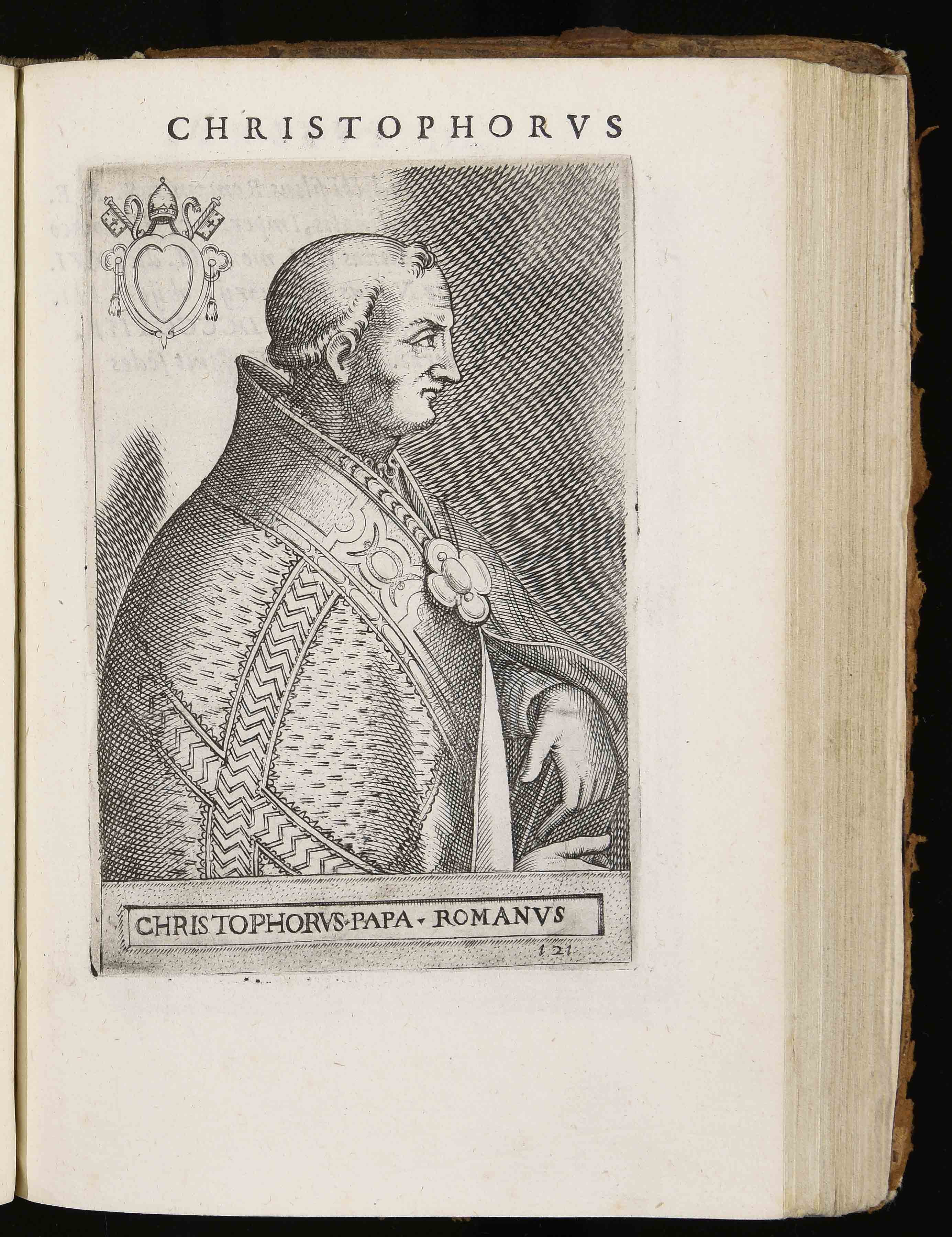Antipope Christopher on:
[Wikipedia]
[Google]
[Amazon]
Christopher claimed the

papacy
The pope is the bishop of Rome and the Head of the Church#Catholic Church, visible head of the worldwide Catholic Church. He is also known as the supreme pontiff, Roman pontiff, or sovereign pontiff. From the 8th century until 1870, the po ...
from October 903 to January 904. Although he was listed as a legitimate pope
The pope is the bishop of Rome and the Head of the Church#Catholic Church, visible head of the worldwide Catholic Church. He is also known as the supreme pontiff, Roman pontiff, or sovereign pontiff. From the 8th century until 1870, the po ...
in most modern lists of popes until the first half of the 20th century, the apparently uncanonical method by which he obtained the papacy led to his being removed from the quasi-official roster of popes, the ''Annuario Pontificio
The ''Annuario Pontificio'' ( Italian for ''Pontifical Yearbook'') is the annual directory of the Holy See of the Catholic Church. It lists the popes in chronological order and all officials of the Holy See's departments. It also provides nam ...
.'' As such, he is now considered an antipope
An antipope () is a person who claims to be Bishop of Rome and leader of the Roman Catholic Church in opposition to the officially elected pope. Between the 3rd and mid-15th centuries, antipopes were supported by factions within the Church its ...
by the Catholic Church
The Catholic Church (), also known as the Roman Catholic Church, is the List of Christian denominations by number of members, largest Christian church, with 1.27 to 1.41 billion baptized Catholics Catholic Church by country, worldwid ...
.
Life and reign
Little is known about the life of Christopher; the lack of reliable, consistent sources makes it difficult to establish a concise biography. It is believed that he was a Roman, and that his father's name was Leo. He wascardinal-priest
A cardinal is a senior member of the clergy of the Catholic Church. As titular members of the clergy of the Diocese of Rome, they serve as advisors to the pope, who is the bishop of Rome and the visible head of the worldwide Catholic Church. ...
of the title of St. Damasus when he became pope. His predecessor, Leo V, was deposed and imprisoned, most likely around October 903. As it is believed that Leo died in prison, Christopher may be regarded as pope after his death. However, the account of Auxilius of Naples says that Sergius III murdered both Leo V and Christopher. An eleventh-century Greek document says that Christopher was the first pope to state that the Holy Ghost proceeded "from the Father and from the Son". However, the document claims that Christopher made this profession to Sergius, Patriarch of Constantinople. At that time, however, Nicholas Mystikos
Nicholas I Mystikos or Mysticus (; 852 – 15 May 925) was the list of ecumenical patriarchs of Constantinople, Ecumenical Patriarch of Constantinople from 1 March 901 to 1 February 907 and from 15 May 912 to his death on 15 May 925. His feast da ...
was Patriarch of Constantinople, making the account historically suspect. ( Sergius I was Patriarch in 610–638, and Sergius II in 1001–1019.)

Dethroning
Christopher was driven from the antipapacy by Pope Sergius III (904–911). Hermannus Contractus contends that Christopher was compelled to end his days living as a monk. However, the historian Eugenius Vulgarius says he was strangled in prison.Legitimacy
Some hold that Christopher was a legitimate pope, regardless of the illegitimate means by which he appears to have acquired the title. His name is included in all major catalogues of the popes through the early twentieth century. His portrait figures among the other likenesses of the popes in the Basilica of Saint Paul Outside the Walls in Rome, and among the frescoes of tenth-century popes painted in the thirteenth century on the walls of the ancient church of San Pietro a Grado, outside Pisa. He was, moreover, acknowledged as pope by his successors. For example, in confirming the privileges of the Abbey of Corbie in France, Leo IX mentioned the preceding grants of Benedict and Christopher. This privilege is the only one of Christopher's acts that is extant. Philipp Jaffé, ''Regesta RR. Pont.'', 3532, 2d ed. However, he has not been considered a legitimate pope since the first half of the 20th century and has been erased from the ''Annuario pontificio
The ''Annuario Pontificio'' ( Italian for ''Pontifical Yearbook'') is the annual directory of the Holy See of the Catholic Church. It lists the popes in chronological order and all officials of the Holy See's departments. It also provides nam ...
''s list of popes
This chronological list of the popes of the Catholic Church corresponds to that given in the under the heading "" (The Roman Supreme Pontiffs), excluding those that are explicitly indicated as antipopes. Published every year by the Roman Curia ...
.
See also
* Papal selection before 1059Notes
{{DEFAULTSORT:Christopher 904 deaths 10th-century antipopes Antipopes Year of birth unknown Burials at St. Peter's Basilica